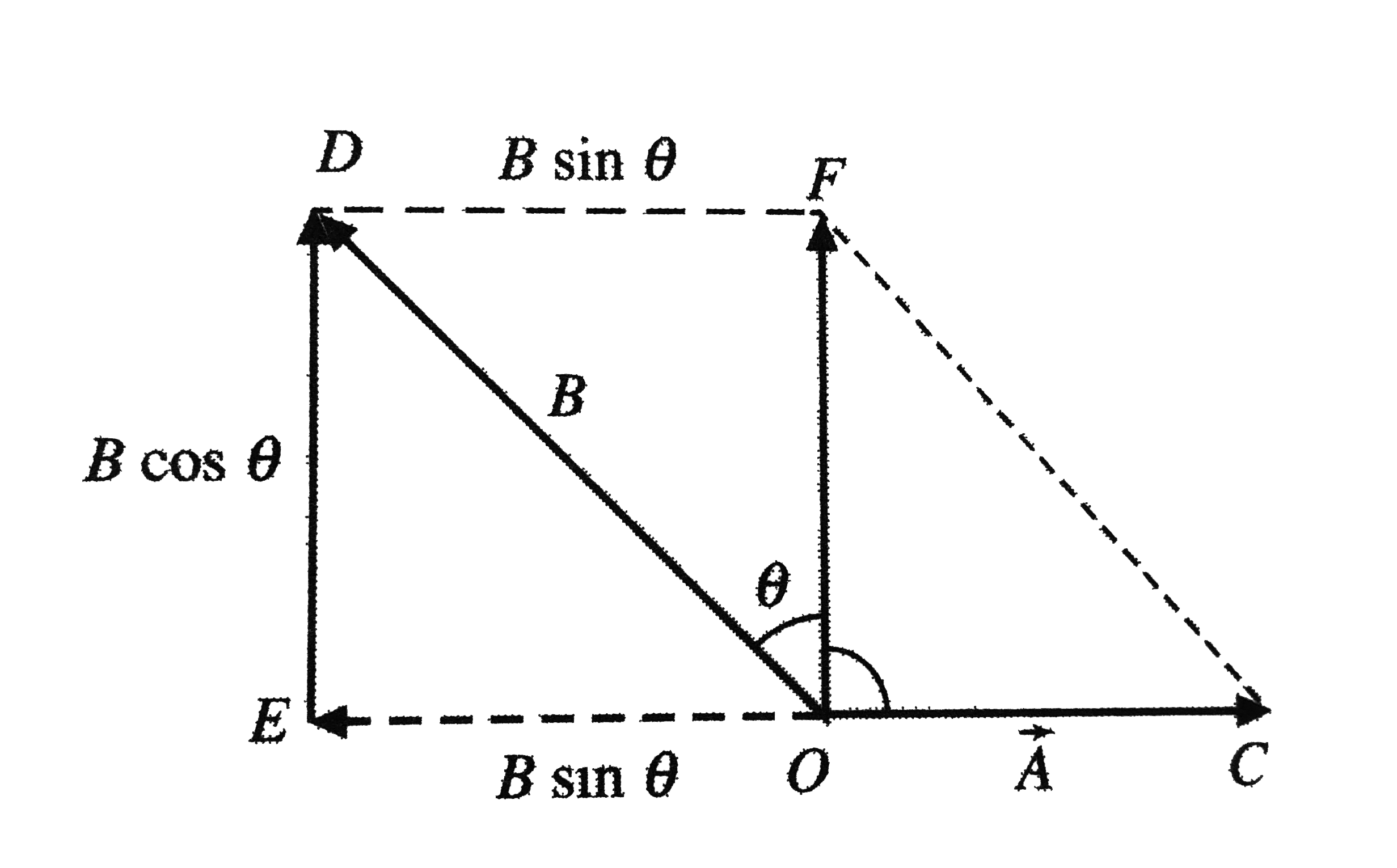Show that →a.(→b×→c) is equal in magnitude to the volume of the parallelpiped formed by the vectors →a,→band→c
To show that →a⋅(→b×→c) is equal in magnitude to the volume of the parallelepiped formed by the vectors →a, →b, and →c, we can follow these steps:
Step 1: Understand the Volume of the Parallelepiped
The volume V of the parallelepiped formed by three vectors →a, →b, and →c can be expressed as:
V=|→a⋅(→b×→c)|
This formula states that the volume is equal to the absolute value of the dot product of one vector with the cross product of the other two vectors.
Step 2: Express the Vectors in Component Form
Let:
→a=a1^i+a2^j+a3^k
→b=b1^i+b2^j+b3^k
→c=c1^i+c2^j+c3^k
Step 3: Calculate the Cross Product →b×→c
Using the determinant form for the cross product, we have:
→b×→c=∣∣
∣
∣∣^i^j^kb1b2b3c1c2c3∣∣
∣
∣∣
Calculating this determinant gives:
→b×→c=(b2c3−b3c2)^i−(b1c3−b3c1)^j+(b1c2−b2c1)^k
Step 4: Calculate the Dot Product →a⋅(→b×→c)
Now, we take the dot product of →a with →b×→c:
→a⋅(→b×→c)=(a1^i+a2^j+a3^k)⋅((b2c3−b3c2)^i−(b1c3−b3c1)^j+(b1c2−b2c1)^k)
Calculating this dot product gives:
→a⋅(→b×→c)=a1(b2c3−b3c2)+a2(−(b1c3−b3c1))+a3(b1c2−b2c1)
This simplifies to:
=a1b2c3−a1b3c2−a2b1c3+a2b3c1+a3b1c2−a3b2c1
Step 5: Conclusion
The expression we obtained for →a⋅(→b×→c) is equivalent to the determinant of the matrix formed by the components of →a, →b, and →c, which represents the volume of the parallelepiped. Thus, we can conclude:
|→a⋅(→b×→c)|=V
This shows that the magnitude of the dot product →a⋅(→b×→c) is equal to the volume of the parallelepiped formed by the vectors →a, →b, and →c.
The volume V of the parallelepiped formed by three vectors →a, →b, and →c can be expressed as:
V=|→a⋅(→b×→c)|
This formula states that the volume is equal to the absolute value of the dot product of one vector with the cross product of the other two vectors.
Let:
→a=a1^i+a2^j+a3^k
→b=b1^i+b2^j+b3^k
→c=c1^i+c2^j+c3^k
Using the determinant form for the cross product, we have:
→b×→c=∣∣
∣
∣∣^i^j^kb1b2b3c1c2c3∣∣
∣
∣∣
Calculating this determinant gives:
→b×→c=(b2c3−b3c2)^i−(b1c3−b3c1)^j+(b1c2−b2c1)^k
Now, we take the dot product of →a with →b×→c:
→a⋅(→b×→c)=(a1^i+a2^j+a3^k)⋅((b2c3−b3c2)^i−(b1c3−b3c1)^j+(b1c2−b2c1)^k)
Calculating this dot product gives:
→a⋅(→b×→c)=a1(b2c3−b3c2)+a2(−(b1c3−b3c1))+a3(b1c2−b2c1)
This simplifies to:
=a1b2c3−a1b3c2−a2b1c3+a2b3c1+a3b1c2−a3b2c1
The expression we obtained for →a⋅(→b×→c) is equivalent to the determinant of the matrix formed by the components of →a, →b, and →c, which represents the volume of the parallelepiped. Thus, we can conclude:
|→a⋅(→b×→c)|=V
This shows that the magnitude of the dot product →a⋅(→b×→c) is equal to the volume of the parallelepiped formed by the vectors →a, →b, and →c.
Topper's Solved these Questions
- SYSTEMS OF PARTICLES AND ROTATIONAL MOTIONBOOK - NCERT ENGLISHCHAPTER - SYSTEMS OF PARTICLES AND ROTATIONAL MOTIONEXERCISE - EXERCISE
33 Videos
- PHYSICAL WORLD BOOK - NCERT ENGLISHCHAPTER - PHYSICAL WORLD EXERCISE - EXERCISE
16 Videos
- THERMAL PROPERTIES OF MATTERBOOK - NCERT ENGLISHCHAPTER - THERMAL PROPERTIES OF MATTEREXERCISE - EXERCISE
22 Videos
Similar Questions
If the volume of the parallelepiped formed by the vectors →a×→b,→b×→cand→c×→a is 36 cubic units, then the volume (in cubic units) of the tetrahedron formed by the vectors →a+→b,→b+→cand→c+→a is equal to
View SolutionVolume of parallelpiped formed by vectors →a×→b,→b×→cand→c×→a is 36 sq. units.

View SolutionIf the volume of the parallelopiped formed by the vectors →a,→b,→c as three coterminous edges is 27 units, then the volume of the parallelopiped having →α=→a+2→b−→c,→β=→a−→b
and →γ=→a−→b−→c as three coterminous edges, is
View Solutionif →a,→band→c are mutally perpendicular vectors of equal magnitudes, then find the angle between vectors and →a+→b+→c.
View SolutionThe resultant of two vectors →A and →B is perpendicular to the vector →A and its magnitude is equal to half of the magnitude of the vector →B. Find out the angles between →A and →B.
 .
.
View SolutionShow that |→a|→b+∣∣→b∣∣→a is perpendicular to |→a|→b−∣∣→b∣∣→a for any two non zero vectors veca and vecb.
View SolutionShow that |→a|→b+∣∣→b∣∣→a is perpendicular to |→a|→b−∣∣→b∣∣→a for any two non zero vectors veca and vecb.
View SolutionIf →a,→b,→c are three non zero vectors (no two of which are collinear) such that the pairs of vectors (→a+→b,→c)and(→b+→c,→a) are colliner, then what is the value of →a+→b+→c? (A) →a is parrallel to vecb(B)vecb(C)vecc(D)vec0
View SolutionThree vectors →A,→B and →C are such that →A=→B+→C and their magnitudes are in ratio 5:4:3 respectively. Find angle between vector →A and →B
View SolutionIf →a,→b,→c are mutually perpendicular vectors of equal magnitude show that →a+→b+→c is equally inclined to →a,→band→c
View Solution
